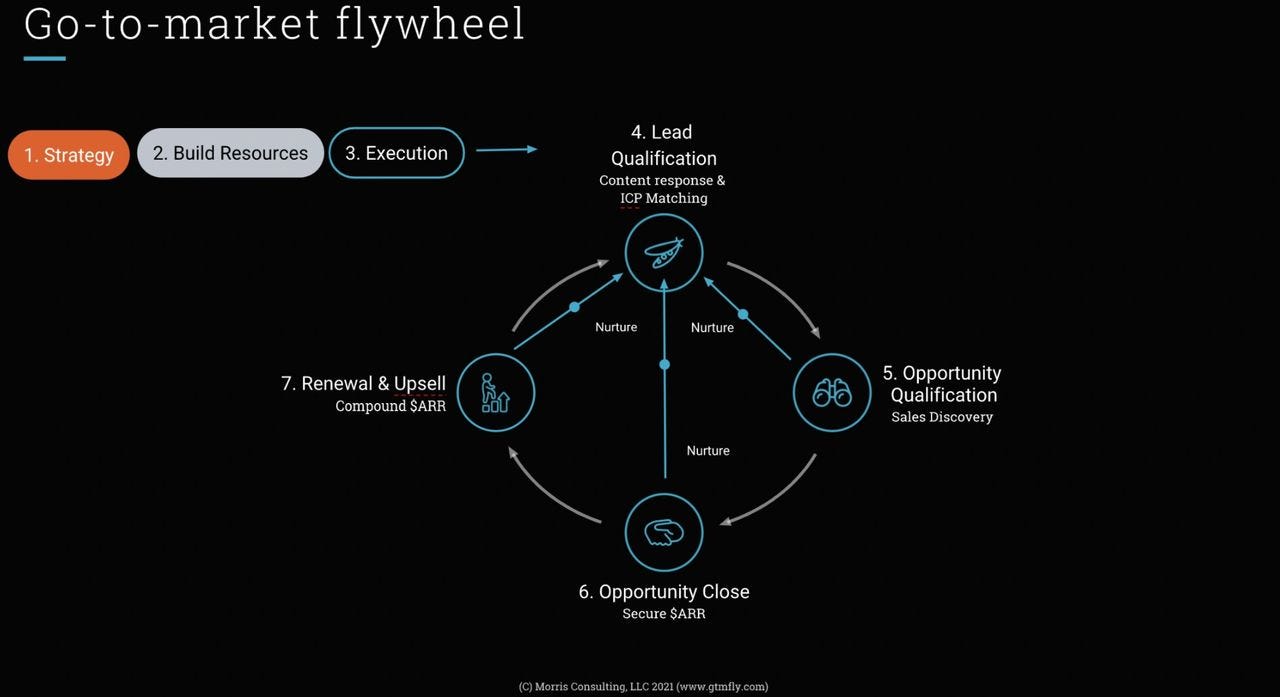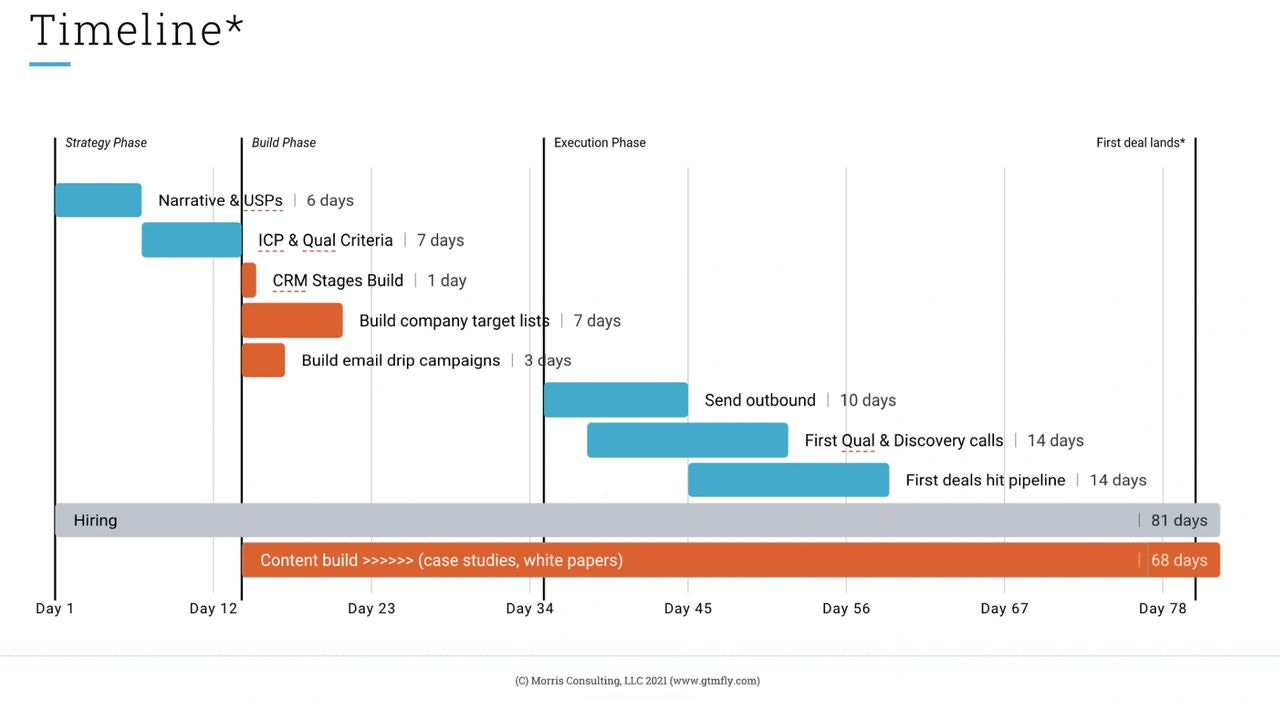It only took the best part of 2 decades, but flywheels are finally ready to replace funnels as best practice in SaaS, Cloud and Marketplace go-to-market teams!
The former marriage of convenience between marketing and sales teams has finally flourished into a loving relationship that, when factored optimally, becomes the fulcrum upon which extremely fast and repeatable growth is achieved.
Leaky bucket syndrome
In the first 10 years of my career when I had no real influence over marketing, I found the disconnect between sales and marketing one that made no sense. In those days, for anyone in sales with a challenging quota it was hard enough owning outbound, and trying to hit quota with just the prospects that were immediately interested, let alone having to upskill in the science of high quality targeted nurturing of prospects who were not quite ready to buy.. ..as a side project!
The leaky bucket of sales funnels was largely accepted as a cost of doing business. Invariably even for the most disciplined and organized sales people, deals were lost unnecessarily.
This never sat well with me and was one of my key motivations to explore roles in early stage start-ups where I owned both sales and marketing.
The funnel is dead, long live the flywheel!
Go-to-market flywheel (C) 2021 Morris Consulting, LLC (waynemorris.co)
The concept of flywheels in building and scaling companies is not new, and was first explored by Jim Collins in his book Good to Great, and is routinely applied in product teams who obsess about optimizing UX. However, go-to-market teams have struggled to harness the concept effectively until recently.
Over the past few years, a number of factors have converged to ensure that sales funnels are forever replaced by GTM flywheels, and that the best sales and marketing teams operate in close tandem.
Technology: Marketing and sales automation tooling such as Salesforce and Hubspot have continued to evolve rapidly, and automated integration tools such as Zapier have emerged, ensuring there is no longer an excuse for a disconnect between the work of marketing teams and the outcomes in sales.
Social Media: Economic buyers are much more visible today. Most buyers will have a LinkedIn profile, and many will be active on Twitter and Clubhouse. This means the act of engaging with your audience in a qualified manner at scale is much easier than it has ever been, and your audience expects. Impossible to do this at scale without the help of marketing.
Unit economics expectations: As the value of SaaS companies has risen exponentially, so has the volume of SaaS start-ups that have been created. Competition is fierce. Therefore, only the most efficient succeed. The strongest Founders and CEOs implicitly understand that acquiring customers is expensive, and that doing it efficiently and ensuring their revenue compounds over time is critical to success. Their LTV/CAC ratio is directly impacted by go-to-market motions, a key indicator of the health of every SaaS, Cloud and Marketplace company. There's less and less room for lost opportunities.
The unicorn is dead, long live the decacorn!: There are 300+ SaaS and Cloud unicorns today. Whilst a $billion outcome remains what most founders are shooting for, VCs know that 10x is now possible. In a recent post by Jason Lemkin, he argues that many growth VCs that invest in $10m ARR SaaS companies are looking for 3x growth for the following 3 years followed by 2x growth for the next 3 years, which gets you to $2bn ARR. These are unprecedented growth expectations. You simply can't achieve that level of growth or anywhere close, if you are not operating in an ecosystem of effective marketing and sales recycling loops.
Where to start?
If you're reading this and thinking your company still has work to do, don't fret, most companies are still figuring this out too. However, now there's no excuse. It's important to build the base of the GTM flywheel now, or face growth challenges down the road.
Where to start depends on your stage of growth, but there is almost always value going back to base and ensuring that you have accurately mapped your position in the competitive landscape.
Example Timeline (c) 2021 Morris Consulting, LLC (waynemorris.co)
Have you effectively isolated your unique selling points? Is your narrative compelling? Have you then used this information to isolate your ideal customer profile? These are all critical questions that need honest answers. Get this wrong or fail to focus and you're immediately inefficient. Get this right and you've got a shot.
One of the most common mistakes I see in SaaS and Marketplace companies is a failure to accurately determine the ideal customer profile. Founders and executives guess at it, or work from gut feel. Early sales to their YC network only compounds the issue. It needs to be much more scientific to ensure you scale over time.
Learning which companies to say "no" to is one of the most liberating outcomes of the ICP process.
What results can you expect?
Some of the top-level directional shifts that resulted from successfully executing just the strategy phase of the flywheel process at my last 3 firms were as follows:
Wonderschool (Child care marketplace): We pivoted from building supply in the marketplace using a 1-to-1 sales model, to a 1-to-many sales approach using a SaaS subscription model via the creation of channel partnerships with government organizations.
Guidebook (Mobile SaaS, events): We switched our ideal customer profile from large one-off events, to companies that ran multiple events throughout the year.
Maxymiser (MarTech SaaS): We introduced professional services to guarantee outcomes that would resonate at C-level, who we concluded were our ideal buyer persona.
Not bad for a few weeks work right?
In the example below, over the 12 month period that followed this work, we grew a new line of business from a standing start to ~$2.5m in closed ARR, built a pipeline >$12m ARR, and reached profitability for the first time in the company's 4 year history by month 9. Notice how the flywheel started to kick in around month 5.
Example growth outcome (c) 2021 Morris Consulting, LLC (waynemorris.co)
Today, our portfolio of customers at Morris Consulting care about fast and sustainable revenue growth that compounds over time.
If you're an early stage SaaS or Marketplace business that has found some level of product market fit, you're likely sat on a goldmine.
The evolution of the sales funnel to the go-to-market flywheel, should fill you with excitement. It's perhaps the single most important set of tools you need to arm yourself with, in order to win.
Thank you for reading and good luck building your GTM flywheel!
Wayne.







